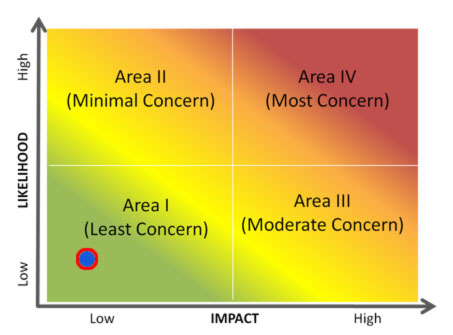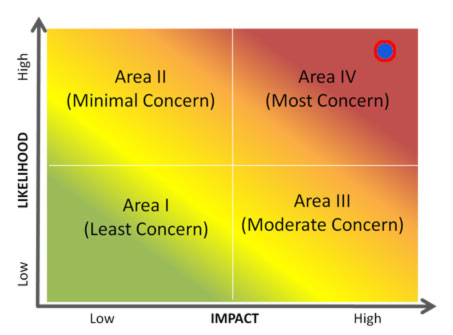Internal Controls - Controlling Risk in the Workplace: The Manager's Role
Screen 8a of 37
Chapter 3: Measuring Risk Examples
Consider the following scenarios:
How would we rate the risk of employees slipping on ice while walking into the office after an ice storm before the sidewalk has been salted?
- The sidewalk leading into the office is heated to melt the ice and snow. The system turns on automatically when it senses precipitation and freezing temperatures. Sturdy handrails are present.
- The sidewalk leading into the office is far from the parking area. The walkway is on an incline. In addition, the office is located in a region where temperatures often remain below freezing for several days at a time.

The likelihood and impact of slipping on ice is a low concern. This means that you would most likely not change the way you maintain the entrance of the building or the way people enter the building, nor would you approach the entrance with any more caution than you would on a summer day. Based on this ranking, doing anything extra, like salting the sidewalk, would be considered an “extreme” control for what is measured as a very small risk.

The risk of slipping on the ice is a great concern. This means that there is a strong likelihood that people would slip, and that someone is likely to get hurt from the fall. You would choose to always control this risk by salting the sidewalk before people arrived at work. You might even consider closing an entrance with an incline because the salt keeps getting washed away by the precipitation, and instead requiring the use of an entrance that is flatter.
Copyright 2014
New York State Governor's Office of Employee Relations